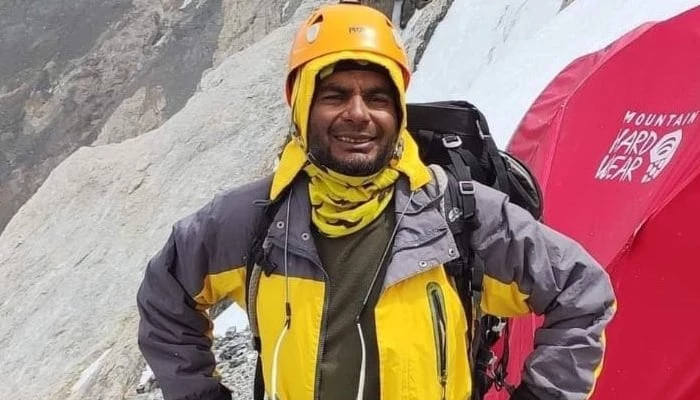Mountaineer Asif Bhatti reaches base camp of Nanga Parbat

Stay tuned with 24 News HD Android App

Asif Bhatti, who was stranded on Nanga Parbat due to snow blindness on Monday (July 3), reached the base camp of Nanga Parbat on Thursday.
Earlier Bhatti reached Camp One the same day and was later shifted to the base camp. Bhatti reached Camp Two from Camp Four with the help of Azerbaijan’s mountaineer named Israfyl.
The ground rescue team consisting of Fazal Ali and Mohammad Younis is also present at Nanga Parbat.
https://twitter.com/atiqueur_rehman/status/1676964603245522951?s=12&t=PDxJEqaHip2_yEe8SyisvA
Secretary Alpine Club of Pakistan Karar Hydari said Asif Bhatti will be brought to Skardu by helicopter tomorrow with the help of the Pakistan Army.
After first aid, Asif Bhatti will be taken to CMH Skardu.
Asif Bhatti and Israfyl, who joined the ground rescue team yesterday, started moving towards Camp One this morning.
Helicopter rescue couldn’t become a possibility due to consistent bad weather.
It must be noted that Sajid Sadpara, Naila Kayani — who is also coordinating the rescue operations —and Hugo Oyaar could not depart from Skardu today.
Earlier on July 5, the rescue operation of Bhatti was delayed due to a rockfall at Nanga Parbat on Wednesday.
“The two volunteer climbers who went for upper slopes of NP [Nanga Parbat] last night couldn't go any further from C1 due to rockfall which started on the mountain last night,” the Karakoram Club tweeted from their official account on July 5.
“The weather seems to be getting worse and Heli [helicopter] rescue is the only hope unless a miracle happens and climbers are able to come down on their own. Prayers for everyone on the mountain and the basecamp,” it added.
The 8,126-metre Nanga Parbat, which is the ninth-highest mountain in the world, is considered dangerous due to its high fatality rate. The mountain has a daunting ascent along with the risk of unstable glaciers, avalanches and storms.
Before its first ascent in 1953, 31 people died attempting to climb the peak which is why it was nicknamed "the Killer Mountain."
The mountain is also called "the western anchor of the Himalayas." It has a 22.3% death ratio, making it the third most dangerous mountain peak in the world.
